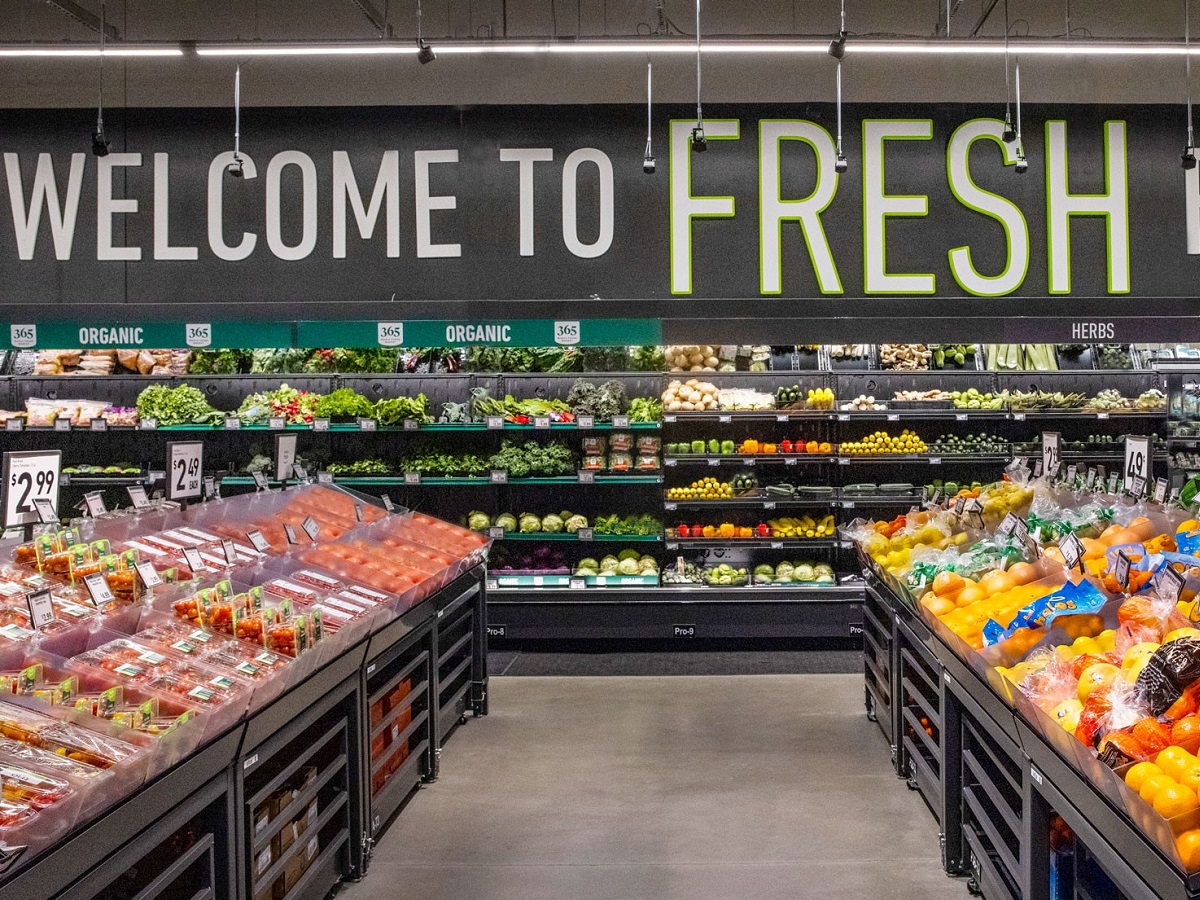Despite being separated by the vast Atlantic Ocean, convenience stores in the US and UK are thriving and were bolstered during the pandemic when local shopping became even more popular than ‘normal’, writes Simon King.
The convenience store sector is alive and well in the United States and United Kingdom, and the COVID-19 pandemic has seen operators become true local retailers, servicing customers that have preferred to shop local, rather than travel to larger stores for fear of mixing with bigger groups of people.
Patrick Mitchell-Fox, a Senior Retail Analyst, said it has been easy for businesses to lose sight of the bigger picture and the longer-term opportunities over the last two years.
“COVID-19 has been both a disruptor and accelerator of the trends we see shaping the industry, revealing opportunities as well as challenges within a single channel such as convenience,” Mitchell-Fox said.
“Delivery is such an important capability in the route to market. It is about having an effective and efficient supply chain for product to reach independent retailers – but much more than that, it is also the key platform for raising the standards and driving improvement in retail execution. Combined with the retail support functions and format development of a symbol offer, it’s what has been transforming the competitive capabilities of independent retailing around the world.”
There’s no doubt that cash and carry also has a significant role to play in the route to market and remains an attractive option for some retailers.
However, for any retailer managing one or more stores above 1,500sq ft, delivery is a critical service to maintaining an effective professional operation.
Mitchell-Fox said: “Coupled with electronic ordering systems, it is the critical link that brings suppliers closer to retailers offering data and visibility to help shape more effective sales strategies.
“Following the boost that the pandemic has given to local shopping, the support and discipline of delivery and symbol group packages are now more important than ever if independent retailers are going to keep, and capitalise further on, this opportunity.”
The rise of the convenience store sector comes at a time where Amazon, for example, is increasing deployment of checkout-free technology; with the arrival of the Amazon Fresh format in the UK in 2021 being seen as the benchmark for a rapid, frictionless shopper experience.
Alongside the technology, Amazon Fresh stores have a well thought out layout and ranging – showing that the business really does mean business as a player in the convenience sector.
Driving convenience through deliveries
Another key development going forward is the growth of rapid delivery services, following the surge in convenience home-shopping during the pandemic and now, the proliferation of specialist operators such as Getir, Gorillas and Go Puff in 2021.
Getir announced earlier this year that it expects to create 6,000 jobs in the UK alone in 2022.
The Turkey-based start-up launched in London a year ago and has since grown to cover 20 towns and cities across the country including Manchester, Birmingham, Liverpool, and Portsmouth.
So far it has created 4,000 permanent jobs, forecast to rise to 10,000 by the end of 2022.
All are classed as employees – a status that entitles workers to certain benefits, unlike some working in the gig economy – and paid at least the real living wage, which is an independently-set rate designed to keep up with cost of living increases.
Getir has pledged to invest £100 million (NZ$192m) in its UK expansion.
With its purple-and-yellow branded e-bikes and e-mopeds, Getir pledges to deliver grocery orders within 10 minutes of an order being received on its app.
Getir operates across Turkey and in addition to the UK has also expanded into countries across Europe including Germany, France, and Spain the Netherlands, as well as the US.
Turancan Salur, Regional General Manager for Getir, said: “2021 was an extremely successful year for Getir as we began our global expansion.
“There was no better city to launch international expansion from than London, due to its worldwide status and welcoming, cosmopolitan, and diverse nature.
“We have beaten all expectations for 2021 and plan to go even further this year.”
There’s no doubt that the main opportunity for these specialists lies in the impulse mission traditionally catered for by convenience stores. It’s also clear that shopper demand for delivery remains high, with shoppers valuing the service increasingly alongside price and choice as a driver of their shopping decisions.
Mitchell-Fox said: “We can certainly see the potential for these new entrants to take share from the traditional store-based retailers, but the opportunity in the market is perhaps at least as accessible to convenience retailers themselves as those delivery specialists. Indeed, we have already seen retailers driving significant incremental sales by using ready-made third party ordering platforms such as Snappy Shopper.”
While not all retailers are prepared to commit to operating such a delivery service, the increasing numbers that do are finding sales boosted by an average of over £2,000 (NZ$3,840) a week, driven by transactions that are typically twice the size of in-store purchasing.
Moreover, while it seems clear that the competition from specialist operators will be most conspicuous in metropolitan catchments, convenience retailers will face much less sustainable competition in more suburban and provincial locations, leaving local retailers with a far less congested field to go after.
Five key trends to shape food-to-go recovery
As the food-to-go market continues through a period of innovation and evolution, IGD has identified the five key trends that are driving its recovery.
Nicola Knight, Senior Analyst at IGD, said: “Technology, delivery, format innovation and product development have all played a significant role in the sector’s recovery. With many of the new consumer behaviours, such as hybrid working, showing evidence of sticking, operators and retailers will now build on existing innovation to take a more planned and strategic approach to developing their businesses.
“We can expect to see a ‘test and learn’ approach as brands continue to navigate the new and evolving ways in which consumers buy food-to-go.”
The five trends predicted to shape food-to-go:
Consumer needs driving formats
With hybrid working looking set to become a social norm, investment in suburban locations will increase and operators will continue to adapt their offers to meet new opportunities such as vending and micro-markets.
Knight said: “Formats are also being adapted to processes, such as delivery orders being dispatched away from walk-in customers, delivery and takeaway-only formats, and the next generation of the drive-thru.”
Price vs Premium
Price will be a key focus, driven by varying household budgets and frequency of spending. While some consumers look for affordable everyday treats, others trade up to a more premium offer.
Knight said: “Meal deals are increasingly popular at both the lower and higher end of the scale, giving consumers the reassurance of knowing what they are paying, regardless of their budget.”
Digital at the heart
Knight said: “Data is being used more intelligently, to develop new products and formats but also to automate processes, such as customer ordering via screens, to free up staff to deliver more added value activities that enhance the customer experience.
“The ‘omnichannel’ approach is becoming increasingly prevalent, enabling customers to move seamlessly between in-store, takeaway, and delivery service for a consistent brand experience.”
Innovation and evaluation
The agile mindset will continue but innovation will be more incremental than disruptive as operators take time to review initiatives.
Knight said: “The sector can expect to see more trialling of concepts and partnerships to assess viability and profitability before wider roll-out. Operators in particular are likely to expand insight teams and increase research budgets to assess the results of new initiatives before deciding where to invest.”
Healthy menus, healthy planet
Health continues to be a growing priority, as does sustainability, which are being driven by both consumers and the government.
Knight added: “2022 will be a year for reflection, innovation, concept development and new ways of doing business, as the market moves forward to adapt to the changing needs of the consumer.
“With household finances under increasing pressure, the market faces new uncertainty and challenges, so the adaptability and agility demonstrated during COVID will need to remain.”
Snappy Shopper grows business with Nisa independents
In the UK, Nisa is a £1.5 billion (NZ$2.9bn) turnover company which exists to provide benefits to around 1,400 partners, operating almost 4,000 stores.
Snappy Shopper has reached £5m (NZ$9.6m) in sales with Nisa retail partners, more than doubling trade on the platform since February with an average basket spend of £28 (NZ$54).
The company, based in Dundee, Scotland, operates an app and website allowing consumers to order groceries from their local convenience store for delivery by the store’s own drivers.
Its clients include retailers from most major grocery chains, including partnership agreements with several regional Co-op, Nisa, and SPAR networks.
Since January 2020, Snappy Shopper has almost doubled its overall number of retail partners, growing from 650 to more than 1,100 stores.
Snappy attributes its success to investment in marketing and promotional spend to support retailers and ensure stores reach their full sales potential as quickly as possible, rather than a focus on growing store numbers.
The company said several Nisa stores have been able to generate incremental sales of more than £100,000 (NZ$192,000), some even having reached more than £500,000 (NZ$960,000).
Daniall Nadeem, who operates Nisa Bellshill, 16 kilometres south-east of Glasgow city centre, said: “We’ve been with Snappy Shopper since January 2020 and what a journey it’s been so far – now we have a full-blown operation and are currently running between 40-50 deliveries a day.
“Around 20% of customers who shop with us in-store, also shop with us on Snappy Shopper – the remaining 80% are fully delivered.”
Mike Callachan, Chief Executive and Co-founder of the Snappy Group, said: “It’s great to see how our technology has helped Nisa retailers achieve such strong sales growth, with the £5m sales mark a real milestone.
“We’re proud to be supporting local retailers to compete in the rapidly expanding home delivery market.”
James Taylor, Head of Central Operations at Nisa, said: “We know that delivered services is becoming an increasingly important proposition within convenience retail, so it’s pleasing to see such strong sales growth for our partners using the Snappy Shopper app.
“We hope to see more success stories in 2022, and any partner wishing to take up the app will benefit from the unique onboarding, launch and sales ramp up process we work hand in hand with the team at Snappy Shopper on.”
Snappy Shopper’s platform allows for full integration with a retailer’s EPOS system, enabling stock data to be updated daily without any requirement for retailers to manually update price changes.
Piers Butel, a retail analyst at Mintel, said the convenience sector has the opportunity to take a position at the confluence of two of the leading trends of the current retail environment – the rise in interest in local communities and local shopping and the vast growth in online retailing.
“If stores are able to position themselves as centres of their local communities offering services that help local consumers engage with the online channel, there is a great potential for strong growth going forward,” Butel said.
Three rising stars in the US
Foxtrot, Choice Market and The Goods Mart may only operate less than 30 convenience stores combined in the US – a market that has almost 150,000 convenience stores – however, all three businesses have innovations that can be applied globally.
Chicago-based Foxtrot was founded by Mike LaVitola in 2013. It was originally setup to be a delivery only business. Foxtrot stores now act as a marketing vehicle for its online business, helping the retailer build loyalty and lifetime customer value. Stores combine convenience retail and foodservice elements with app-based purchasing, with delivery available in under one hour using its own delivery network.
Charles Chan, Senior Retail Analyst at RetailAnalysis, said: “The retailer’s national delivery platform, ‘Foxtrot Anywhere’, offers a curated selection of in-store best sellers into gift boxes. These often fit into certain themes, e.g. Pasta Night box, making it easier for shoppers to navigate online.
“Customers using the Foxtrot app get personalised information about the retailer’s rewards programme. It also acts as a digital wallet in-store that enables quick contactless payment.”
Products at Foxtrot are recommended based on time-of-day, location, and shopper preferences.
Denver-based Choice Market was founded by Mike Fogarty in 2017. It makes eating heathier easy, focusing on healthy meals, allowing consumers to customise salads and sandwiches. Ingredients include quinoa, zucchini noodles, free-range chicken, and more. Choice’s mobile app gives users the ability to shop by dietary lifestyle or recipes.
The Choice Market mobile app enables customers to shop any SKU available in-store (including alcohol) online, while acquiring loyalty points that can be redeemed for future discounts. Online orders are fulfilled by electric vehicles and e-bikes in 45 minutes or less.
Chan said: “Choice is partnering Tortoise to pilot remote-controlled delivery vehicles/robots to help ease labour market shortages; longer term, this will help free up staff members to focus on fresh food preparation.”
New York-based The Goods Mart was founded by Rachel Krupa in 2018. The concept is to serve the local community, offering healthier and more sustainable options. The retailer partners up and coming brands so that better for you products are accessible both from a price and missions perspective.
Customers can also enjoy The Goods Mart’s innovative subscription snack boxes, which start at US$32 per month (NZ$49). The boxes are filled with a mix of snacking products and preference for vegan, gluten free and other dietary requirements can be selected.
By Simon King



